During March 2013 we stayed in Albany to continue our exploration of the southern coast of Western Australia. The city centre is at the northern edge of Princess Royal Harbour, which is almost enclosed from King George Sound by the Vancouver Peninsula and is one of the largest natural harbours in the world. The Central Business District is bounded by Mount Clarence at 177 metres above sea level to the east, and Mount Melville to the west is 152 metres above sea level.
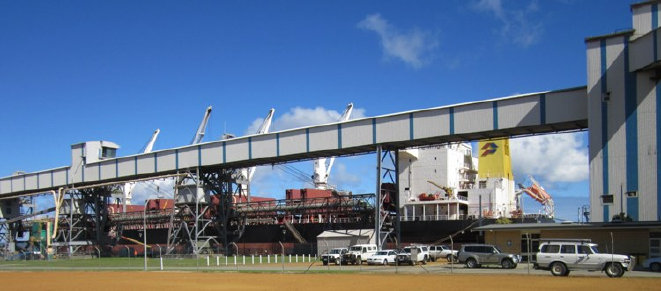
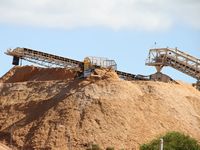
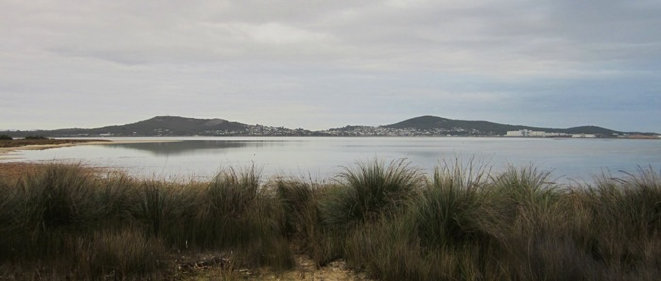
Holiday accommodation for caravanners and campers
There are ten Caravan Parks in and around Albany, with powered site prices ranging from $28 to $68 according to park and season. In addition, along Two Peoples Bay Road, Two Peoples Caravan Park opened in 2017, with powered sites and amenities in a bushland setting, and at a relatively low cost.
There are a number of free and low cost community and National Parks campgrounds within the Shire, but not all are suitable for caravans or have access for caravans, and some are small. With room for only a few camps in each place, they fill in popular camping times such as long weekends and school holidays.
Lockyer selected the site of what is now known as Albany for the crown and thus formed the first Western Australian settlement. Albany was settled some three years before the Swan River colony, later to be known as Perth.
Major Lockyer named his new town 'Frederickstown', after King George III's second son, His Royal Highness Prince Frederick Augustus, Duke of York and Albany. In 1831, the settlement was transferred to the control of the Swan River Colony and renamed Albany by Governor James Stirling.
After a difficult voyage, the first half battling through heavy weather in Bass Strait and the second enduring the summer heat of the westward run, the brig reached Princess Royal Harbour on Christmas Day.
The settlement party comprised the commandant Major Edmund Lockyer, a captain, surgeon, storekeeper, 18 rank and file soldiers, and 23 convicts, mostly tradesmen. Also on board were the vessel's own crew and a naval party comprising Lt Colson Festing, a quartermaster, midshipman and a marine batman - and stores for six months, including sheep and pigs. Cooking was done on the deck of the Amity, and in rough weather, fires could not be risked so meals were served cold. Rations carried consisted of salted meat, flour, dried peas, sugar and raisins.
Sold into private ownership in 1831 the Amity was operated in Tasmania until in 1845 she was wrecked in Bass Strait on an uncharted sandbank.
The project to build a replica of the brig Amity commenced in 1972. After much discussion and research, construction started in 1975, with local boat builder Mr Stan Austin as project supervisor and Mr Pieter van de Brugge as leading shipwright. Other local craftsmen joined the team, with the aim of making the replica the focal point of celebrations of the 150th anniversary of the brig's arrival.
When you visit this full-size replica, try to imagine more than fifty men, together with stores, sheep and pigs, sharing this small vessel in a difficult journey taking over six weeks. Imagine the stench below deck with 61 men living so close. The bedding was basic, with straw filled mattresses, coarse blankets and kit bags as pillows.
The Albany Historical Society, under an arrangement with the City of Albany, is proud to manage the Brig Amity.
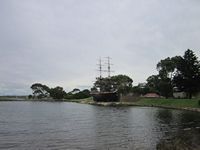
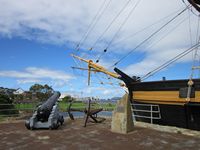
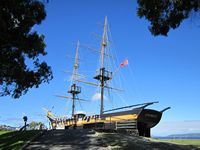
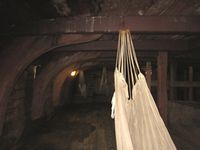
The Old Gaol and Museum
The Old Gaol was built by convicts in 1852 for Imperial convicts shipped to Western Australia as artisans and skilled labourers.
Womens cells, the Great Hall and more warders' quarters were constructed of brick between 1872 and 1875. At that time the complex was also used as a colonial prison.
Extensively restored since the 1960s it is now a museum of goal life.
Now fully restored, the Gaol is a complex of mens cell blocks and some warders quarters.
The Gaol was last used as a police lockup in the Great Depression of the 1930s. Extensive restoration from 1989 to 1996 returned the Gaol's condition to its original state. Cells, warders quarters and the Great Hall contain displays pertinent to the times and usage of these stark quarters.
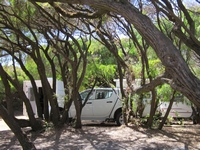
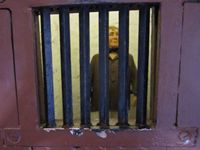
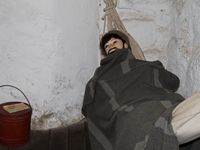
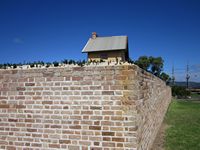
Who was the prisoner in Cell 12?
There is little doubt as to the identity of the prisoner and his crime. He was hanged in 1872; the only hanging to take place in the prison.
Stories about the events surrounding the murder vary. The version told by the Historical Society at the Old Gaol varies in details from the second extract from a webpage listing all known hangings in Australia.
Peter McKean (Alias William McDonald)
In cell 12, there is a replica of Peter McKean alias William McDonald who was born in 1829. He was convicted at Ayr, Scotland, in 1855 for housebreaking; he was transported for 21 years. He arrived on the "Runnymeade" on 11 September 1855 and was granted a Ticket of Leave on 28 July 1860.
McKean, as a ticket-of-leave man came to work for Henry (Yorky) Marriott on his lease at Slab Hut Gully, which is near Kojonup, in return for his keep. It appears that a business agreement between the two men involving money for sandalwood ended when money McKean had owing did not materialise.
On Sunday 30 June 1872, Yorky Marriot failed to pay his usual visit to neighbours. On 8 July, Marriot's body was found lying behind a cart and the police near Kojonup were informed.
McKean was not at the farmhouse but later returned and told neighbours that he had left to go to Albany but had lost his way. When questioned he blamed the death of Marriot on a vicious horse but because of other evidence McKean was brought to trial in Albany and was found guilty. He was sentenced to be hanged. As Albany did not have a scaffold, portable scaffolding and a hangman were shipped from Fremantle for the execution. The scaffold was set up in the grounds of the Albany Convict Gaol in the corner facing the east. Peter McKean was hanged on 12 October 1872.
At the time of the hanging the identity of the hangman was kept a secret as he was a convict who was given twelve months remission from his sentence. The identity of the hangman was George (Thomas) Marshall.
McKean, Peter (age: 43 / White) Western Australia Albany
12 October 1872
Murder victim: William Marriott committed 30 June 1872, sentenced on 25 September 1872
Peter McKean (alias William McDonald), a bond man, was convicted and sentenced to death at Albany Circuit Court on 25 September 1872 for the murder of William "Yorkie" Marriott, a Ticket of Leave man, committed on 30 June 1872. Both men had been employed by Thomas Norrish of Eticup near Broomehill. McKean had been living together with Marriott for about two or three weeks but supposedly went to Albany to transact some business. Marriott was reputed to be very careful with his money and had a considerable amount hidden away. After robbing Marriott, McKean killed him with an axe. Marriott's body was found on 8 July 1872, lying behind a cart not far from his hut. His head was gnawed away by dogs, so Marriott was only recognized by the loss of a finger on the right hand.
After his arrest McKean stated that Marriott had been killed by "a vicious horse," but couldn't prove it.
He was hanged at Albany on 12 October 1872 by a fellow convict, George Marshall, in the presence of many spectators, including schoolchildren. (Purdue, Legal Executions in Western Australia, p. 22-3; Albany Public Library, MD 2005.655, information collected by Dora Bulbeck; Scoop, Autumn 2009, p. 74)
Details of the men and women hanged in Australia between 1870 and 1967
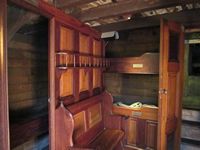
The town nestles between Mount Clarence (to left) and Mount Melville (to right), with grain silos and a woodchip export facility at
the port.
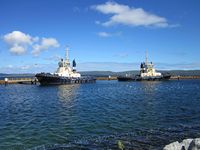
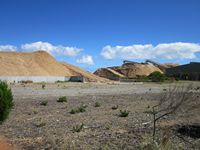
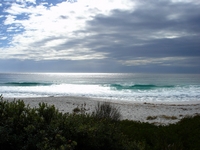
Albany - the first settlement in Western Australia
Australia So Much to See
The first settlement in Western Australia
The Amity sailed from Sydney on 9th November 1826, carrying a party under the command of Major Edmund Lockyer, who had orders to form a settlement at King George Sound.